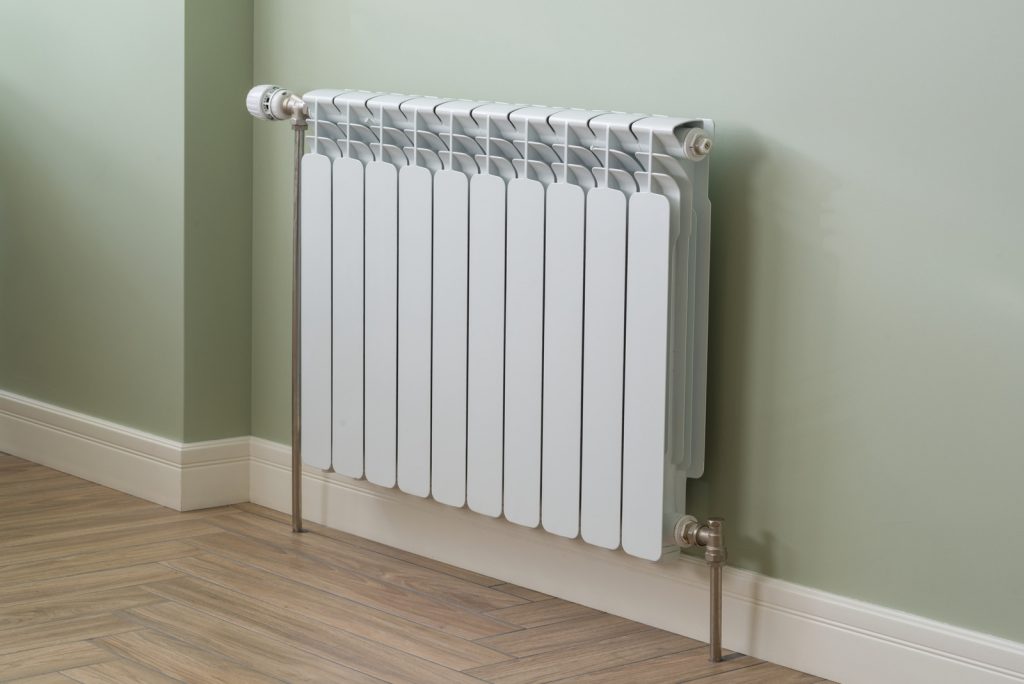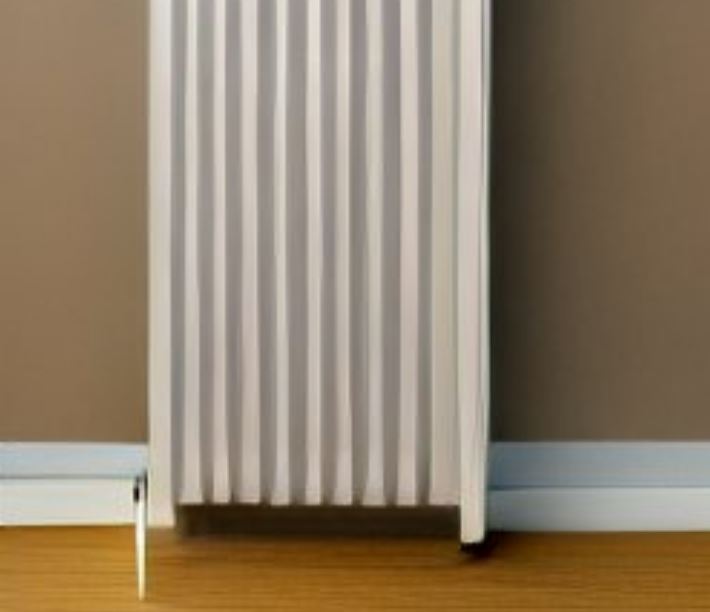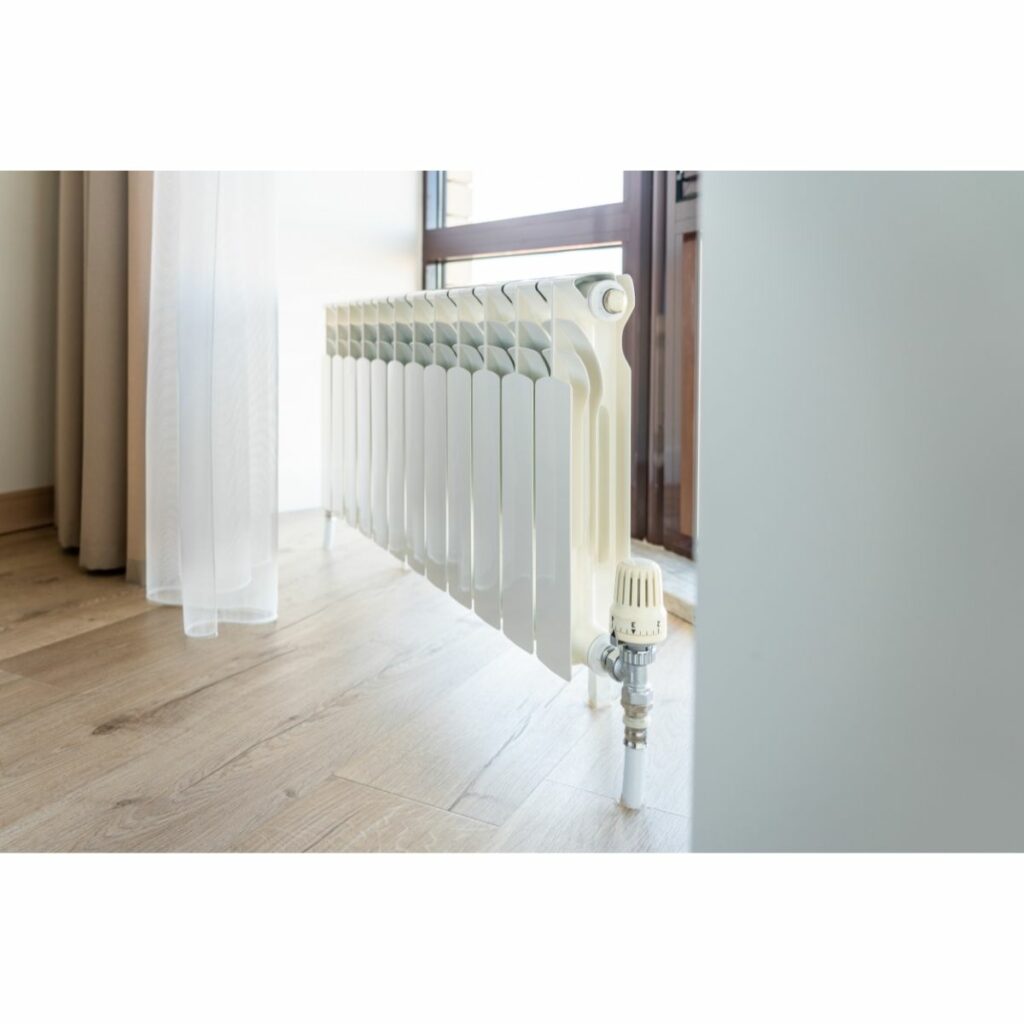Although generally rectangular in shape, radiators come in many sizes, both for functional and aesthetic reasons. Getting the right size and style for a particular room can be tricky. In terms of numbers, 1 or 2 radiators will adequately heat the majority of rooms.
Here we look at sizes available and other factors that matter when choosing a radiator.

Radiator sizes
There is a very wide choice of radiators available. The common radiator sizes have:
Heights of
- 300mm
- 400mm
- 600mm
- 700mm
Widths of
- 400mm
- 500mm
- 2400mm
How to calculate what radiator size you need
We need to work out what heat output is required to heat your room to a comfortable level. That will depend on the size of your room and the temperature you want, generally this is between 18 and 22 degrees. You need to measure the length, width and height of your room in metres.
Multiply the three to give you the room volume. For example, a room measuring 5 metres length, 5 metre width and 3 metre height has a total volume of 75 cubic metres. As a rule of thumb, use 15 cubic meters for every 1kW. So a room of 75 cubic meters will need a radiator of 5kW output.
Another way to calculate the radiator size is to use the table below:
Radiator Size Table
| Room Type | Room Volume (m3) | BTU | Watts |
| Living Room | 30 | 2900 | 850 |
| Kitchen | 22 | 2792 | 818 |
| Bathroom | 12 | 845 | 250 |
| Bedroom | 26 | 1400 | 400 |
What Is a BTU?
BTU stands for British Thermal Unit, and is a traditional measurement of heat. It approximates the amount of energy required to heat 1lb (one pound) of water from 39°F to 40°F, and is roughly equal to 1.055 KJoules. Many manufacturers still display this unit along with the more recent Kilowatt (kW). Multiply the BTU by 0.000293 for conversion to kilowatts.
Factors that affect radiator size
Factors that affect the size of the radiator you require include the temperature you feel comfortable with, the type of room and its dimensions, the size of the window in the room and whether it’s double glazed, what is above and below the room, for example another heated room; and the number and type of outside walls .
Standard radiator sizes
Standard sizes of radiators depend on the manufacturer and the styles they have designed. It also depends on the room they are intended for and the materials used for the product. Traditionally radiators were from 300m to 700mm height and 400mm to 2400mm width. Vertical radiator common sizes are a height of 1600mm by 280mm width.
Loveradiators.com has a huge range of radiators that suit any preference. Their extensive range boasts models fit for every room in the house, from stunning feature radiators for living rooms to quirky heated towel rails to keep bathroom towels warmed and everything in between. The BTU and kW units are listed next to the products.
Standard radiator height from the floor
The minimum height of a radiator above the floor is 150mm. This is a practical height because it allows cooler air to replace the heated air from underneath the radiator. It also enables work on the radiator valves. Also from an aesthetic view, 150mm is above the top of a skirting board.

Where to place a radiator
In the past, radiators were placed under windows because of the space available and it made sense to position them in the coldest part of the room. However, with double glazed windows, more heat is retained in the room so now radiators can be placed anywhere in the room and still work efficiently.
How many radiators in a room?
As long as the heat output needed to warm the room is met, you can have more than one radiator in the room. If part of one wall is needed for sofa or furniture space, you can fit two smaller radiators on different walls. If the room is large or not insulated well, you may need two larger radiators anyway.
Calculations are made in BTU, you can find a calculator at Loveradiators.com but all of their radiators will show this for you once one is selected.
Where not to place radiators
Places in a room where radiators should not be positioned are behind large furniture or behind sofas that cover the entire width. They shouldn’t be behind curtains that cover them the whole time. All of these stop heated air from flowing correctly around the room.
How many radiators for my house?
You will find that you need a radiator in almost every room in the house, including hallways and landings, unless the space is very small. You won’t need the same type of radiator in all the rooms; for example a towel radiator should suffice in a bathroom, or a vertical radiator in smaller wall spaces.
Some rooms have flueless fires installed or low power electric heaters, although they emit heat, in many cases they aren’t sufficient to warm the room up comfortably. Even with these in the room, you could still need a radiator to actually heat the room up.

Can a radiator be too big for a room?
A radiator that is too big for a room will overheat it quickly. If the room thermostat is in that room the boiler will stop the heating, potentially leaving the rest of the house not warm enough. An oversized radiator can also increase fuels costs with the wasted energy as well as taking unnecessary wall space.
Radiator minimum distance off the wall Radiators come with brackets that have both a short leg and a long leg. The short leg is 30mm so this would be the minimum distance off the wall. As long as you use the brackets that come supplied with radiator, you have met the correct distance requirements. Note, only the long can be used for certain radiators.
*The information in this article should be used for general guidance only and not as financial advice. Full details are on the link in the footer to our disclaimer page. Always discuss your requirements with a competent and suitably qualified professional before undertaking any work.
Affiliate disclosure
Heatology.co are participants in a variety of affiliate schemes which help fund and run this website, visitors who follow our links and purchase a product may earn Heatology.co a commission. The money we make from affiliate marketing costs you nothing but keeps us online, so thank you for your continued support!
